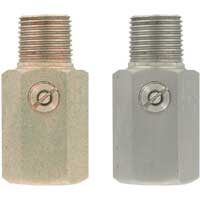 We recently met with a customer in Odessa, TX, who was having an abnormal amount of smart pressure transmitter failures in their LACT skids from one customer’s region.
We recently met with a customer in Odessa, TX, who was having an abnormal amount of smart pressure transmitter failures in their LACT skids from one customer’s region.
Lease Automatic Custody Transfer (LACT) units are used for the unattended and automatic measurement of the quality and quantity of crude oil, typically from well head producers to purchaser, or from truck offloading into storage tanks. These sites are typically on production lease sites in remote areas.
A failure of any of the transmitters’ monitoring system parameters typically cause the LACT skid to shut down, preventing the transfer of oil from the truck or the storage tank. This results in lost time and revenue from the system being down. In addition, because these are often used in remote areas, there is lost time and an additional cost of sending a technician out to identify the problem.
The failures of the instrument were thought to be from a hammer effect in the process itself. It was believed to be hit suddenly with a large amount of pressure (well within the units’ ratings) instead of a gradual increase. One proposed solution was a pulsation dampener or pressure snubber.

The Adjustable Pressure Snubbers, Series A-262, protect pressure instruments against fluctuations, surges, spikes and fluid hammer. The fine thread adjustable valve allows you to fine tune harmful harmonic vibration from the fluid systems and isolate the instrument from the process when service or replacement is necessary. These pressure snubbers are designed to provide fully field adjustable dampening. By using these Dwyer adjustable pressure snubbers, you will alleviate surges and pulsations to assure steady pressure readings and extend the life of your instrument.
The Series A-262 was an inexpensive solution to protect the customer’s expensive transmitters. This also prevented downtime of the LACT itself, as well as the cost of sending a technician to a remote location to troubleshoot the issue. The customer noted that “since the pressure snubbers were installed, zero transmitters have been returned for failure from the process conditions by that customer.”
